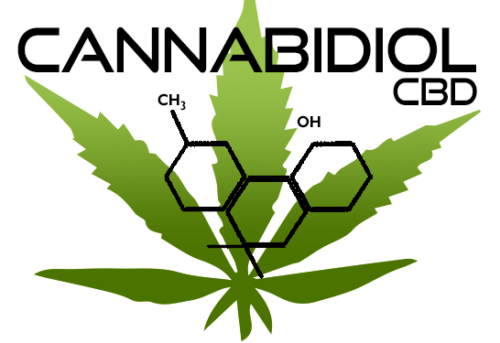CBD – The Miracle Cannabinoid
CBD also referred to as Cannabidiol came into the limelight in a big way after the simple plant chemical helped stop an epileptic seizure in its track on U.S national television. Since then, a lot of enthusiasts have discovered that this miracle charm can calm anxiety, stop spasms and even provide a soothing effect for people with chronic pain. But what’s CBD, what does it do or how does it work and how is it different from THC? To help you familiarize with Cannabidiol, read through this piece for some insight.
So What Is Cannabidiol?
Cannabidiol is one of the most common compounds in the cannabis plant. And contrary to tetrahydrocannabinol (THC) which is more famous, Cannabidiol is completely nonpsychoactive. You should not expect to get “high” off this chemical compound, however. Cannabidiol is basically relaxation with zero intoxication. And while CBD has certain effects on the body, consuming it by itself will not send you to the same cerebral adventure as that of THC. For many years, the general public and medical practitioners ignored Cannabidiol because psychoactive cannabis had been in the limelight for a long time.

As of now, the medical potential of Cannabidiol has brought cannabis to the limelight. Several preclinical trials conducted over the years reveal that CBD shows great promise as an:
- Antioxidant
- Antidepressant
- Analgesic
- Anti-inflammatory
- Neuroprotectant
- Anti-psychotic
Cannabidiol is frequently used by patients in form of an oil. Additionally, patients suffering from more chronic conditions like epilepsy and cancer often rely on the medical cannabis oil extracted from different cannabis varieties.
What Does CBD Do To You?
Most predominant in the trichomes (resin glands) of the female cannabis plant, CBD is just one among the over 80 chemical compounds referred to as cannabinoids – molecules that bind to some special receptors on your body cells. Certain cannabinoid receptors are highly concentrated in the central nervous system whereas others are present in every organ in the body. These receptors could even be present in reproductive organs, skin and the digestive tract. You can think of cannabinoids as keys and the receptors as locks. So when you consume cannabis, you’re basically taking “keys” that interact with different “locks” in your body.
In a way, Cannabidiol seems to tap into the body’s balancing system and give rise to its therapeutic effects. Cannabidiol can interact with different cells in our bodies because this molecule possesses a composition that’s similar to what the body produces naturally.
CBD Influences Various Receptor Systems
Despite being a cannabinoid, CBD doesn’t interact with the two common cannabinoid receptors – CB1 and CB2. Instead, Cannabidiol affects the body’s signaling through the CB1 and CB2 receptors indirectly, which explains why Cannabidiol is not psychoactive as opposed to THC. Besides its indirect influence on CB1 and CB2 receptors, Cannabidiol can increase the levels of your body’s naturally-produced cannabinoids by inhibiting all enzymes which break them down.
What’s more intriguing about Cannabidiol is its influence on different non-cannabinoid receptor systems in the human brain, interacting with the receptors sensitive to various neurotransmitters and drugs, which includes opioid receptors that are known for pain regulation. Cannabidiol has various ways that it can be ingested, through the skin, bathing, Cannabidiol also interacts with dopamine receptors that play a major role in the regulation of various aspects of cognition and behavior, including reward seeking behaviors and motivation.
Anti-Inflammatory and Anti-anxiety
The anti-inflammatory or anti-anxiety impact of Cannabidiol is mostly linked with the activation of the Adenosine receptor. Through the stimulation of adenosine, Cannabidiol promotes the release of glutamate and dopamine neurotransmitters. Processes such as motivation, cognition, reward mechanism and motor control are normally associated with the release of dopamine whereas glutamine is associated with memory formation, learning, and excitatory signals.
Whole Plant Medicine
Although Cannabidiol is a powerful medicine when consumed on its own, it is good to note that its effects are amplified when this chemical compound is combined with some other cannabinoids, with one of the biggest debates dealing with the most recent push for “whole plant medicine” – an idea that has to do with the entourage effect. The idea behind this effect is that different cannabinoid combinations such as THC and CBD work in synergy to give the body certain therapeutic effects. And this explains why there are patients who respond well to Cannabidiol when others show a good response to THC.
If there is a point to bring home in this piece, it is this: Cannabidiol has a great therapeutic potential. However, scientists will require more hard-hitting research. The Navajo Indian tribe will shortly be legalizing the production of hemp within their territories.
